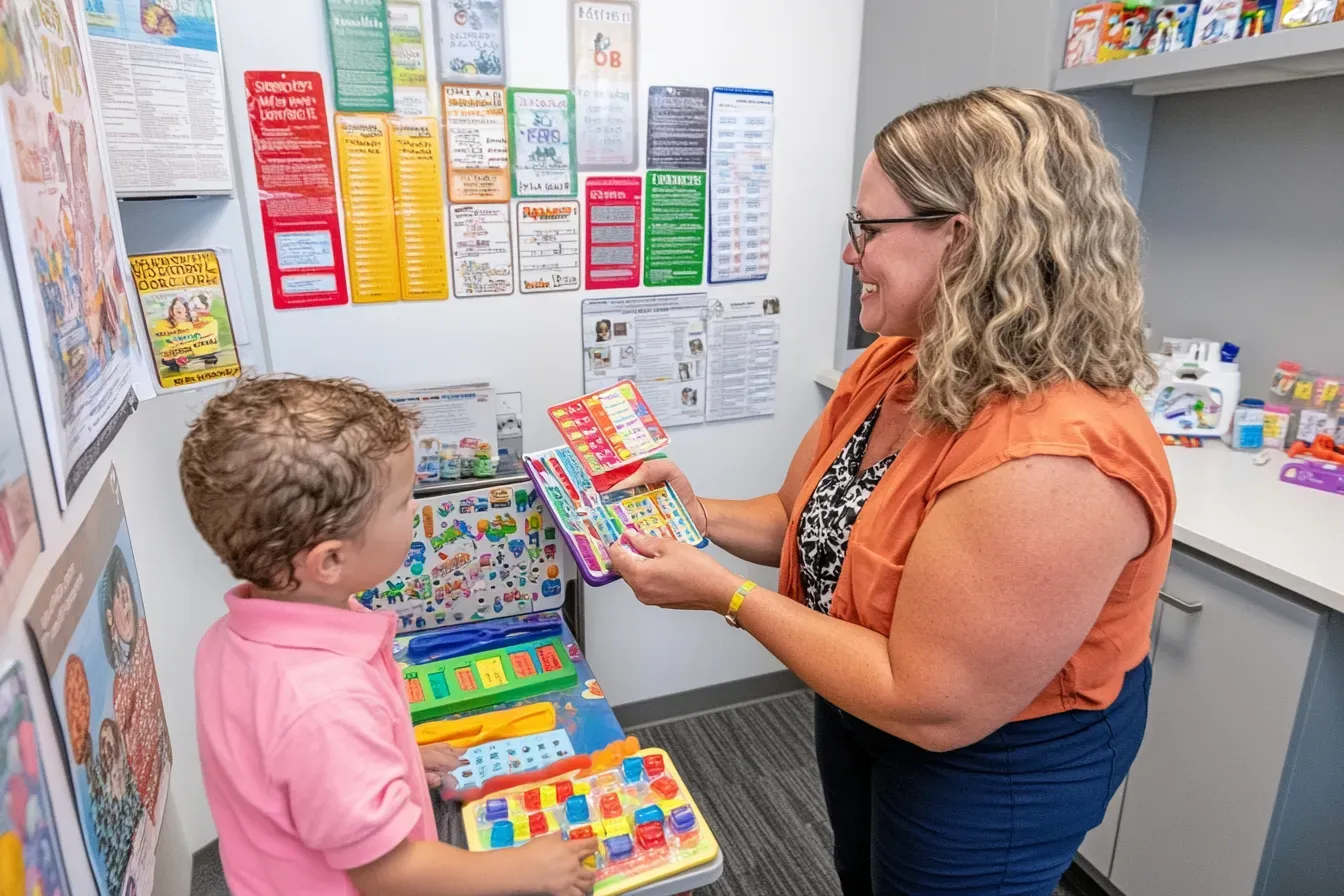How Can I Get Rid of Student Loans Without Paying for 2026?
Dealing with student loan debt can be daunting, but several avenues can alleviate the burden without direct repayment. This comprehensive guide explores key strategies, each providing a viable path to reducing or eliminating student loan debt without paying directly, tailored to different professions, life circumstances, and service commitments. With careful planning and the right resources, you can effectively manage and potentially erase your student loan debt for 2026.
Key Things You Should Know About Getting Rid of Student Loans Without Paying for 2026
- PSLF requires 120 qualifying monthly payments under an income-driven repayment plan.
- IDR Plans can lead to loan forgiveness after 20-25 years of qualifying payments.
- Employer contributions towards student loans are tax-free up to $5,250 per year.
- Federal grants and state programs offer specific loan forgiveness for professions like teaching and healthcare.
- Military service provides several options for student loan forgiveness or repayment assistance.
Table of Contents
- How do I apply for a deferment or forbearance on my student loans for 2026?
- What are the requirements for Public Service Loan Forgiveness (PSLF)?
- How do IDR plans work for student loans?
- What are the benefits of refinancing student loans?
- What conditions qualify for federal student loan discharge?
- How do employer student loan repayment programs work?
- Are there grants available to pay off student loans?
- What states offer student loan forgiveness programs?
- How can military service help with student loan forgiveness?
- How can volunteer work lead to student loan forgiveness?
- What alternative education pathways can reduce reliance on student loans?
- Can dual degree programs lower overall student loan costs?
- Can financial planning reduce dependency on student loans?
- Are private student loans with no credit an effective alternative?
- How Can I Secure the Lowest Student Loan Rates?
- Can FAFSA Approved Online Colleges Offer a Cost-Effective Alternative to Traditional Education?
- When is the Best Time to Initiate Student Loan Relief Applications?
- Can accelerated degree programs help reduce student loan debt?
- Are there job opportunities that don't require a college degree to reduce student loan reliance?
- Can trade careers help reduce student loan dependency?
- What are the potential risks of pursuing student loan relief strategies?
- Other Things You Should Know About Getting Rid of Student Loans Without Paying
How do I apply for a deferment or forbearance on my student loans for 2026?
When faced with financial difficulties, deferment and forbearance provide temporary relief from student loan payments. Understanding how to apply for these options is crucial to managing your debt effectively.
Applying for Deferment
Deferment is when repayment of the principal and interest of your loan is temporarily delayed. Common reasons for deferment include:
- Enrollment in School: If you are enrolled at least half-time in an eligible college or career school.
- Economic Hardship: Includes unemployment, underemployment, or receiving public assistance.
- Military Service: During active duty and for a period after demobilization.
- Peace Corps Service: Volunteering in the Peace Corps qualifies you for deferment.
To apply for deferment:
- Contact Your Loan Servicer: Reach out to your loan servicer to request a deferment application.
- Complete the Application: Provide all necessary documentation, such as proof of enrollment or evidence of economic hardship. The documentation required will vary depending on the type of deferment you are seeking.
- Submit the Application: Submit the completed application and documentation to your loan servicer. Keep copies of all documents for your records.
During deferment, interest may still accrue on unsubsidized loans, so it is important to understand the financial implications.
Applying for Forbearance
Forbearance allows you to temporarily stop making payments or reduce your monthly payment for up to 12 months. It is typically granted at the discretion of the loan servicer for reasons such as financial hardship or illness.
To apply for forbearance:
- Contact Your Loan Servicer: Request a forbearance application from your loan servicer. Explain your financial hardship or other qualifying conditions.
- Complete the Application: Detail your financial situation and provide any necessary documentation, such as medical records or proof of income.
- Submit the Application: Send the completed application to your loan servicer and retain copies for your records.
Interest accrues on all loans during forbearance, including subsidized loans, which can increase the total amount owed if not paid during the forbearance period.
What are the requirements for Public Service Loan Forgiveness (PSLF)?
The PSLF program offers forgiveness of remaining loan balances for those working in qualifying public service jobs. This program is designed to encourage individuals to enter and continue working in public service fields.
Eligibility Criteria
- Employment: You must work full-time for a qualifying employer, such as a government organization, a non-profit organization that is tax-exempt under Section 501(c)(3) of the Internal Revenue Code, or a non-profit organization that provides certain types of qualifying public services.
- Loan Type: Only Direct Loans qualify for PSLF. If you have other types of federal student loans, you can consolidate them into a Direct Consolidation Loan to qualify.
- Repayment Plan: You must be enrolled in an income-driven repayment plan (IDR) such as Income-Based Repayment (IBR), Pay As You Earn (PAYE), or Revised Pay As You Earn (REPAYE).
- Payments: You need to make 120 qualifying monthly payments under a qualifying repayment plan while working full-time for a qualifying employer. These payments do not need to be consecutive.
Applying for PSLF
- Submit the Employment Certification Form (ECF): It is recommended to submit the ECF annually or whenever you change employers to ensure your employment qualifies. This form verifies that you are employed by a qualifying employer.
- Make 120 Qualifying Payments: Ensure that your payments are made under a qualifying repayment plan while employed full-time by a qualifying employer.
- Complete the PSLF Application: After making 120 qualifying payments, complete and submit the PSLF application, which includes sections for your personal information and employment certification.
- Submit the Application: Send the completed application to FedLoan Servicing, the designated servicer for PSLF, and await a decision.

How do IDR plans work for student loans?
IDR plans adjust your monthly student loan payments based on your income and family size, potentially leading to loan forgiveness after a set period.
Types of IDR Plans
- REPAYE: Payments are 10% of discretionary income and can lead to forgiveness after 20 years for undergraduate loans or 25 years for graduate loans.
- PAYE: Payments are 10% of discretionary income, but never more than what you would pay under the Standard Repayment Plan. Loans are forgiven after 20 years.
- IBR: Payments are 10-15% of discretionary income, depending on when you borrowed the loans, with forgiveness after 20 or 25 years.
- Income-Contingent Repayment Plan (ICR): Payments are the lesser of 20% of discretionary income or what you would pay on a fixed plan over 12 years, adjusted according to your income, with forgiveness after 25 years.
Benefits and Application
- Reduced Monthly Payments: Your monthly payments are calculated as a percentage of your discretionary income, making them more affordable based on your current financial situation.
- Loan Forgiveness: Any remaining loan balance is forgiven after 20 or 25 years of qualifying payments, depending on the plan and the type of loan.
To apply for an IDR plan:
- Complete the IDR Plan Request: This can be done online via the Federal Student Aid website. You will need to provide your personal information and select the IDR plan you wish to apply for.
- Submit Income Documentation: Provide your most recent tax return or other proof of income. If your income has changed significantly since your last tax return, you can provide alternative documentation.
- Renew Your Plan Annually: You must recertify your income and family size each year to remain in an IDR plan. Failure to recertify can result in your payment reverting to the standard repayment amount.
The chart below shows the percentage of discretionary income that the borrower has to pay for each type of IDR plan.
What are the benefits of refinancing student loans?
With the current trend in student debt, refinancing student loans can be a strategic move to manage them more effectively by obtaining better loan terms.
Key Benefits
- Lower Interest Rates: Refinancing can reduce your interest rate, leading to significant savings over the life of the loan.
- Simplified Payments: Consolidating multiple loans into a single loan simplifies your repayment process.
- Better Terms: Adjusting the loan term can result in lower monthly payments or a quicker payoff period, depending on your financial goals.
Considerations
- Loss of Federal Benefits: Refinancing federal loans with a private lender means losing federal protections, such as access to IDR plans, deferment, forbearance, and potential loan forgiveness programs.
- Credit Requirements: You need a good credit score and a stable income to qualify for the best refinancing rates. Some lenders offer refinancing options that consider alternative credit factors.
To refinance student loans:
- Research Lenders: Compare offers from multiple lenders to find the best interest rates and terms. Look for reputable lenders with good customer reviews.
- Compare Rates and Terms: Use online tools to compare rates and terms based on your credit score and loan amount.
- Apply Online: Submit an online application with the chosen lender, providing necessary documentation such as proof of income and existing loan details.
- Select the Best Offer: Once approved, review the loan terms carefully and select the offer that best meets your financial needs. Finalize the refinancing process by signing the loan agreement.
What conditions qualify for federal student loan discharge?
Federal student loan discharge relieves borrowers from the obligation to repay their college fee loans under specific conditions.
- Total and Permanent Disability (TPD): If you have a medical condition that prevents you from engaging in substantial gainful activity, you may qualify for TPD discharge.
- School Closure: If your school closes while you are enrolled or shortly after you withdraw, you may be eligible for discharge.
- False Certification: If your school falsely certified your eligibility to receive the loan, you could qualify for discharge.
- Unpaid Refund: If you withdrew from school and your school did not return the required loan funds to the loan servicer, you may be eligible for discharge of the amount the school was supposed to refund.
- Borrower Defense to Repayment: If your school misled you or engaged in other misconduct in violation of certain laws, you might qualify for the discharge of your federal student loans.
Application Process
- Determine Eligibility: Review the specific criteria for each type of discharge to determine if you qualify.
- Complete the Appropriate Discharge Application: Each type of discharge has a specific application form available on the Federal Student Aid website.
- Submit Required Documentation: Provide necessary documentation to support your claim, such as medical records for TPD or evidence of school closure.
- Await Decision: Submit the application to your loan servicer or the U.S. Department of Education and await a decision. The review process may take several months, so it is important to be patient and follow up as needed.
How do employer student loan repayment programs work?
More employers are offering student loan repayment assistance as a benefit, which can significantly reduce your student loan debt.
Program Structure
- Direct Payments: Some employers make direct payments to your loan servicer on your behalf, reducing your loan balance.
- Monthly Contributions: Employers may contribute a set amount each month towards your student loans. These contributions are usually capped annually.
- Tax-Free Benefit: Under current legislation, employer contributions towards student loans are tax-free up to a certain limit, making this benefit even more attractive.
Tax Implications
- Tax-Free Contributions: Employer contributions towards student loans are tax-free up to $5,250 per year under the CARES Act, extended through 2025 by the Consolidated Appropriations Act of 2021.
Finding Programs
- Check with Your Employer: Ask your HR department if your employer offers student loan repayment assistance and how to enroll in the program.
- Explore Job Opportunities: Look for job opportunities that include student loan repayment benefits. Many companies highlight this benefit in their job postings.

Are there grants available to pay off student loans?
Student loans can be unavoidable even when you have savings for college. Fortunately, some grants are specifically designed to pay off student loans and can significantly reduce your debt without the need for repayment.
Types of Grants
- Federal Grants: Some federal grants, like the Teacher Loan Forgiveness Grant, can be applied towards student loan repayment for eligible teachers.
- State Grants: Various states offer grants for loan repayment, often targeting specific professions like healthcare, education, or public service. Examples include the NYS Get on Your Feet Loan Forgiveness Program and the Texas Loan Repayment Program for Mental Health Professionals.
- Private Grants: Some organizations and foundations provide grants to help with student loans, such as the National Health Service Corps (NHSC) Loan Repayment Program.
Application Process
- Research Available Grants: Start by researching grants through federal, state, and private sources. Websites like the Federal Student Aid website and your state’s education department can be valuable resources.
- Check Eligibility Criteria: Review the eligibility criteria for each grant to ensure you qualify. Common requirements include working in a specific profession, serving in underserved areas, or maintaining a certain level of employment.
- Complete and Submit Applications: Follow the application instructions carefully and submit all required documentation. Be mindful of application deadlines and ensure all materials are submitted on time.
What states offer student loan forgiveness programs?
With the current statistics on student loans, many states offer loan forgiveness programs targeting specific professions, such as healthcare, education, and public service. These programs aim to attract and retain professionals in critical areas.
Examples of State Programs
- California: The Assumption Program of Loans for Education (APLE) provides loan forgiveness to teachers who work in underserved schools or teach in shortage subjects.
- New York: The NYS Get on Your Feet Loan Forgiveness Program offers loan forgiveness to recent college graduates who are enrolled in an income-driven repayment plan and are living and working in New York State.
- Texas: The Loan Repayment Program for Mental Health Professionals provides loan repayment assistance to mental health professionals who work in underserved areas.
Eligibility and Application
- Determine Eligibility: Review the specific eligibility criteria for the state program you are interested in. Common requirements include working in a qualifying profession, serving in underserved areas, and maintaining employment for a certain period.
- Apply Through the State’s Official Program Website: Most state programs have an online application process. Be prepared to provide documentation such as proof of employment, licensure, and loan information.
- Provide Required Documentation: Ensure all necessary documentation is submitted with your application. This may include employment verification, proof of service in underserved areas, and loan statements.
The table below summarizes the examples of state programs.
How can military service help with student loan forgiveness?
Military service offers several options for student loan forgiveness or repayment assistance, recognizing the sacrifices made by service members.
Key Programs
- PSLF: Military service qualifies as public service, making you eligible for PSLF if you meet the other requirements.
- Military College Loan Repayment Program: Each branch of the military offers programs that repay a portion of your student loans. The specifics vary by branch, but they generally require you to enlist for a certain period.
- Veterans Total and Permanent Disability Discharge: Veterans with a service-related disability may qualify for discharge of their federal student loans.
Steps to Benefit
- Contact Your Military Personnel Office: For detailed information on available programs and eligibility criteria, reach out to your military personnel office.
- Complete Necessary Paperwork: Enroll in the programs by completing the required paperwork. This often includes providing documentation such as enlistment contracts and loan information.
- Maintain Required Service and Documentation: Ensure you fulfill the service requirements and keep thorough records of your eligibility and participation.
How can volunteer work lead to student loan forgiveness?
Pursuing a degree can be costly, causing many students to rely on loans that must be repaid even after graduation. Volunteering can be a pathway to student loan forgiveness through specific programs that recognize the value of service.
Popular Programs
- AmeriCorps: Volunteers can earn a Segal AmeriCorps Education Award upon completion of service, which can be used to repay federal student loans. AmeriCorps also offers interest accrual benefits during service.
- Peace Corps: Volunteers can defer federal student loans during service and may receive partial cancellation benefits under certain loan programs. Peace Corps service also qualifies for PSLF.
- Volunteers in Service to America (VISTA): After completing a year of service, VISTA volunteers receive an education award that can be applied to student loans or future educational expenses.
Application and Service
- Apply to the Volunteer Program: Each program has its own application process. Ensure you meet the eligibility requirements and submit a thorough application.
- Complete the Required Service Term: Fulfill the service commitments, which typically range from one to two years.
- Use the Education Award or Other Benefits: Upon completing your service, apply the education award or other benefits to your student loans. Keep records of your service and benefits received.
The table below shows a summary of the popular programs that offer ways to repay or forgive student loans.
What alternative education pathways can reduce reliance on student loans?
Exploring alternative education pathways can significantly minimize the need for student loans, ultimately reducing long-term debt. For example, enrolling in community colleges before transferring to a four-year institution can save students thousands of dollars in tuition costs. These institutions often have lower tuition fees and offer seamless transfer agreements with universities, helping students achieve their academic goals affordably.
Furthermore, pursuing online courses or summer programs can enable students to accelerate their degree completion, potentially lowering overall college expenses. Some of the best options include programs that are tailored to working professionals or those seeking flexibility in their education plans. If you're considering funding your summer coursework, explore various options for student loans for summer classes to make informed choices that align with your financial needs.
Vocational training and apprenticeship programs provide another viable path for those interested in skill-based careers. These alternatives not only reduce the upfront costs of education but also often lead directly to high-demand, well-paying jobs, bypassing the need for traditional student loans entirely. By carefully evaluating these educational options, prospective students can achieve their career aspirations without incurring burdensome debt.
Can dual degree programs lower overall student loan costs?
Dual degree programs allow students to integrate complementary disciplines into a single streamlined academic plan, potentially reducing both time to graduation and overall costs. By shortening the duration of study, these programs can lower the financial burden associated with extended tuition fees and accrued interest. This approach suggests that concentrated academic planning, with options like the best undergraduate dual degree programs, may offer a strategic pathway to mitigate student loan dependency through accelerated career entry and enhanced earning potential.
Can financial planning reduce dependency on student loans?
Effective financial planning is a proactive strategy for minimizing the reliance on student loans and managing educational expenses more responsibly. By creating a detailed budget that accounts for tuition fees, living costs, and other academic expenditures, students can identify areas for cost-cutting and prioritize funding sources that don't require repayment, such as scholarships, grants, or part-time work opportunities.
Importantly, students should also assess how much loan they truly need. This can involve evaluating specific elements, such as housing costs, to determine if there are alternatives to taking on excessive debt. If you're wondering if borrowed funds can cover living expenses, exploring answers to questions like "Can I use student loans to pay for apartment rent?" offers detailed insights to guide this aspect of your planning.
In addition to crafting a sound budget, early savings strategies like setting aside funds in a 529 College Savings Plan can substantially reduce future borrowing needs. Parents and students alike can benefit from exploring these tax-advantaged savings accounts to fund education without resorting to loans.
Finally, building an emergency fund during college years can serve as a financial buffer, reducing the need to rely on loans in times of unexpected hardship. By embedding financial literacy education and disciplined saving into your academic journey, the necessity for loans—and the associated long-term debt—can be significantly curtailed.
Are private student loans with no credit an effective alternative?
Borrowers with limited or poor credit history might consider private student loans that do not rely on conventional credit checks. These options often assess eligibility based on alternative factors, such as future income potential or the availability of a cosigner, rather than a standard credit score. While such loans can provide quicker access to funds, they may come with higher interest rates and more rigorous repayment terms. Therefore, it is essential to analyze your financial situation and compare these offerings with other relief strategies before making a decision. For additional details on these alternatives, consult private student loan no credit.
How Can I Secure the Lowest Student Loan Rates?
Evaluating competitive interest rates is essential to minimizing long-term repayment costs. Begin by comparing offers from various lenders, keeping in mind factors such as your credit profile, repayment horizon, and any processing fees involved. Refinancing may consolidate your debt under favorable terms if it presents a substantial reduction in overall interest. Utilize reliable comparison resources like lowest student loan rates to identify offers that best match your financial strategy, ensuring that you review all eligibility requirements and loan conditions carefully.
Can FAFSA Approved Online Colleges Offer a Cost-Effective Alternative to Traditional Education?
Accredited online institutions provide a viable path to reducing overall education costs by offering competitive tuition fees, flexible scheduling, and reduced ancillary expenses. For students balancing work and study, these schools often enable continued income generation while pursuing a degree. Evaluating program length, certification quality, and post-graduation earnings potential can further inform cost–benefit analyses when comparing online and traditional education models. Moreover, exploring options through FAFSA approved online colleges offers an opportunity to assess programs that align with individual financial strategies and career objectives.
When is the Best Time to Initiate Student Loan Relief Applications?
Determining the optimal timing for initiating student loan relief can significantly impact your overall benefit. Evaluate your personal financial situation, upcoming income changes, and long-term educational goals to decide when to proceed. Consider deadlines and eligibility windows for various programs, as these factors may influence both forgiveness amounts and terms. For detailed guidance on evaluating your application timeline, refer to when can I apply for a student loan.
Can accelerated degree programs help reduce student loan debt?
Accelerated degree programs offer a cost-effective alternative by shortening the time required to complete a credential. Completing a degree faster can lower total tuition fees and reduce the period during which interest accrues on student loans. These programs allow students to enter the workforce sooner, easing financial strain and potentially decreasing the overall need for borrowed funds. Exploring options such as fast associate degree programs online may provide an efficient route to reducing long-term education costs.
Are there job opportunities that don't require a college degree to reduce student loan reliance?
Pursuing career opportunities that do not require a college degree can serve as a strategic alternative to incurring significant education debt. Many sectors offer competitive wages and career advancement without the financial burden of tuition, enabling individuals to bypass student loans altogether. Roles in healthcare support, technical services, and administrative positions often provide structured on-the-job training and clear pathways for advancement. For instance, exploring hospital jobs without a degree can reveal positions that not only promise financial stability but also eliminate the need for extensive academic investments. Adopting such non-traditional career paths can be an effective way to achieve professional growth while maintaining financial independence.
Can trade careers help reduce student loan dependency?
Pursuing trade careers offers a streamlined educational path that minimizes high tuition costs and accelerates workforce entry. Technical certifications and vocational programs typically require less time and financial investment compared to traditional college degrees. Many institutions now offer flexible learning options, including trades online courses, which help students acquire marketable skills while managing other commitments. This focused approach to education can lead directly to high-demand fields, enabling individuals to achieve financial stability and reduce the need for extensive student loan debt.
What are the potential risks of pursuing student loan relief strategies?
While student loan relief programs provide significant benefits, they also present potential challenges. Some options, such as deferment or forbearance, can result in accruing interest that increases the overall debt burden, adversely affecting long-term financial planning. Eligibility complexities and evolving regulatory criteria may lead to uncertainties in forgiveness programs, potentially delaying or limiting benefit realization. Evaluating these risks carefully and comparing them with alternatives—such as exploring our guide What are the easiest degrees to get?—can help inform a more robust financial strategy.
Key Findings
- Deferment and forbearance can provide temporary relief from student loan payments due to economic hardship or military service.
- Only Direct Loans qualify for PSLF, which requires employment with a qualifying employer.
- IDR plans adjust monthly payments based on income and family size, potentially leading to loan forgiveness.
- Refinancing student loans can lower interest rates but may result in the loss of federal benefits.
- Conditions such as total and permanent disability or school closure can qualify for federal student loan discharge.
- Some employers offer direct payments or monthly contributions towards student loans as a benefit.
- Grants and state programs can significantly reduce student debt without repayment, often targeting specific professions and service commitments.
Other Things You Should Know About Getting Rid of Student Loans Without Paying
What happens if I do not pay my student loans?
When your loan payment is overdue by 90 days, it is officially classified as delinquent. This information is reported to the three main credit bureaus, which will negatively impact your credit score. As a result, any new credit applications may be denied or approved only with higher interest rates typically reserved for high-risk borrowers.
Can student loan debt ruin your life?
Having student debt can hinder your ability to purchase a home if your debt-to-income ratio is excessively high. Excessive student loan debt can also limit your ability to save for retirement. Moreover, student loan debt can decrease your credit score, particularly if you miss payments.
What happens if you never earn enough to repay student loans?
If you cease working or your income falls below the repayment threshold, your repayments will pause until your earnings exceed the threshold again. You will need to make a repayment if your income surpasses the weekly or monthly threshold at any time during the year, such as when receiving a bonus or working overtime.
References:
- Federal Register. (2024, April 17). Student debt relief for the William D. Ford Federal Direct Loan Program (Direct Loans), the Federal Family Education Loan (FFEL) program, the Federal Perkins Loan (Perkins) Program, and the Health Education Assistance Loan (HEAL) program. https://www.federalregister.gov/documents/2024/04/17/2024-07726/student-debt-relief-for-the-william-d-ford-federal-direct-loan-program-direct-loans-the-federal
- Federal Student Aid. (n.d.). Student Loan Forgiveness. https://studentaid.gov/manage-loans/forgiveness-cancellation


































